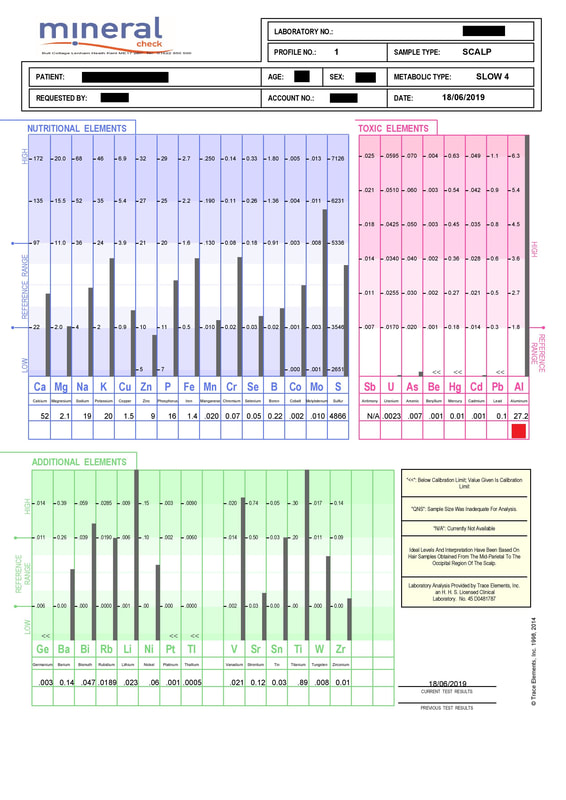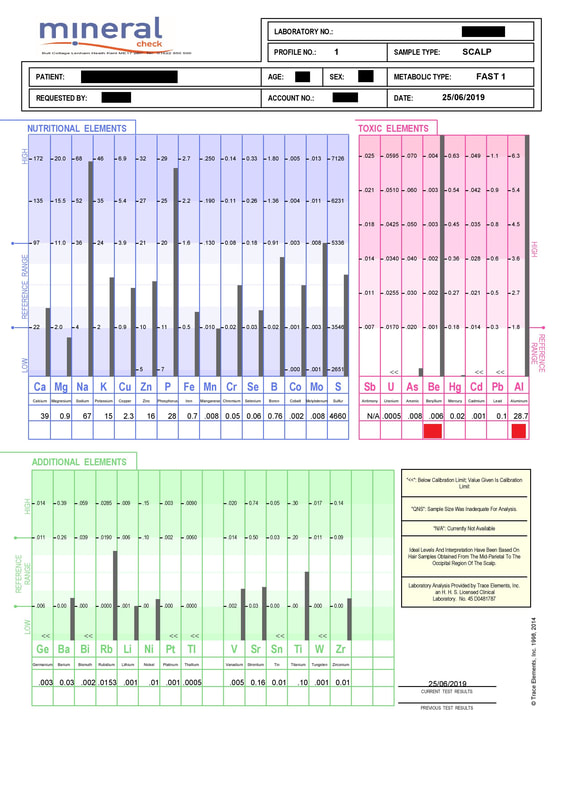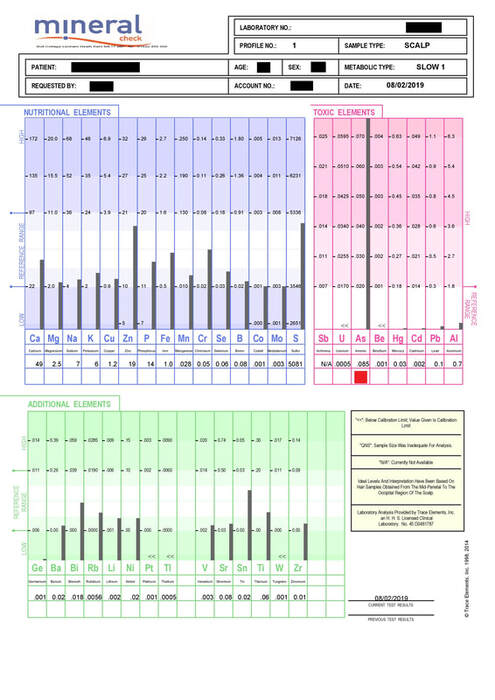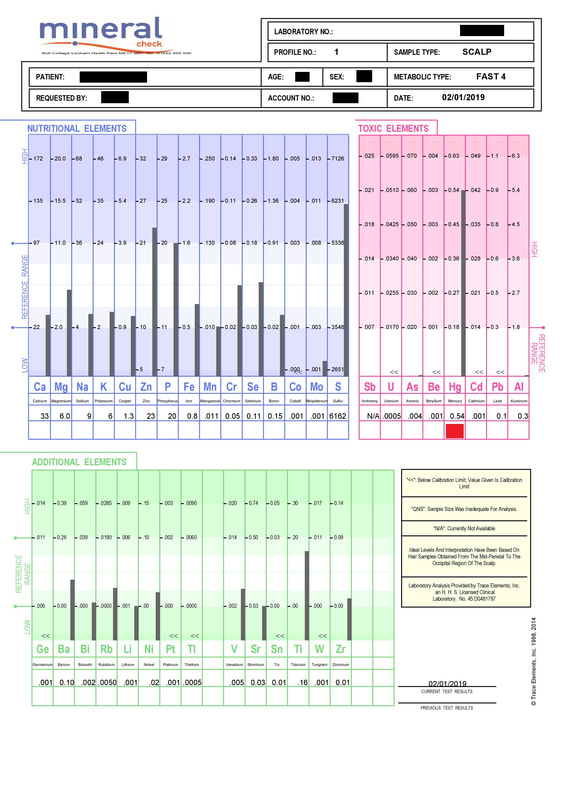Toxic metals
What are toxic metals?

Toxic metals comprise a group of minerals that have no known function in the body and are harmful/toxic for human and animal life. Toxic metals can either be man- made or naturally occurring. All toxic metals are heavy metals (higher atomic mass) and all are toxic and should not be inside in the body but still find their way in from day to day contact. Toxic metals can cause mental and physical health symptoms and can be associated with different health conditions.
Where are toxic metals found and how do they enter the body?
Toxic metals are present in everyday life and even if you follow a balanced nutritious diet and live in a safe clean environment, they can still find their way of getting into the body. There are different ways toxic metals can enter - ingestion, inhalation, and absorption through the skin and mucous membranes. Toxic metals can be inside food and drink, medicines, food containers, cooking utensils and equipment, air and water, piping and industrial settings. Toxic metals such as mercury can be present in someone's teeth due to the use of dental amalgam fillings containing mercury.
What are the causes of toxic metal accumulation in the body?
Toxic metals can build up in a person's organs and body tissue and even though the body is capable of protecting the brain from toxins and substances, toxic metals can still find their way into the brain especially when it comes to excessive amounts. A person's susceptibility to toxic metal build up depends on their diet, lifestyle, working environment and general day to day contact, another factor is stress. Stress can have a big impact on mental and physical health (for more information on stress please click here) and it can increase the likelihood of toxicity. Adrenal fatigue is another factor; the adrenals are needed to detoxify from toxic metals, if these organs are impaired they cannot do their job properly (for more information on adrenal fatigue please click here).
Below is a list of the causes and influences of toxic metal accumulation in the body:
- Alcohol and drug abuse
- Adrenal gland diseases/syndromes
- Adrenal insufficiency
- Bad dieting - refined foods, junk food, processed foods
- Bathing/washing water
- Cooking utensils and equipment
- Consuming food and drink which contain toxic metals
- Certain household chemicals/products
- Drinking water
- Dental fillings
- Environmental exposure
- Frequent contact with toxic metal sources
- Fungicides/pesticides
- Impaired body detoxification and detox pathways
- Mineral imbalances
- MTHFR gene mutations
- Nutritional deficiencies
- Organ dysfunction
- Physical trauma
- Pyroluria
- Prescription drugs and medications which contain toxic metals
- Repetitive stress
- Surgery
- Stressful jobs
- Stimulants - caffeine, recreational drugs
- Supplements which contain traces of toxic metals
- Sulfur amino acid deficiencies - cysteine, glutathione, taurine, methionine, homocysteine
- Sluggish liver
- Tinned food and beverages
- Vitamin deficiencies
What are the toxic metals?
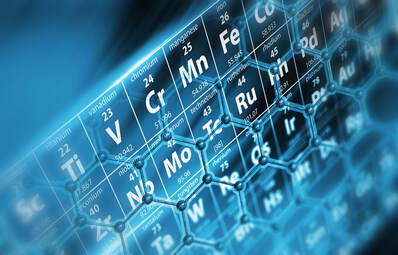
There are different types of toxic metals which can accumulate in the body, the most common ones are aluminium, mercury, lead, arsenic and cadmium, these toxic metals are regularly found in our environment and day to day life. Most people will have at least one of these toxic metals in their system even if it is a minuscule amount.
Some nutrient metals are heavy, meaning that they are relatively dense and have a higher atomic weight. Nutrient heavy metals are required in smaller amounts than other lighter nutrient metals and they are regarded as trace elements. If nutrient heavy metals are balanced in the body then they will not pose any toxic threat to human health, if they are excessive however they can have the same side effects as toxic metals. The heavy nutrient metals which are more likely to cause toxicity issues are copper, manganese, iron and zinc. Heavy nutrient minerals can build in the system due to various reasons.
Below is a list of toxic and nutrient metals, if you click on a specific toxic metal you will find information on the sources:
Some nutrient metals are heavy, meaning that they are relatively dense and have a higher atomic weight. Nutrient heavy metals are required in smaller amounts than other lighter nutrient metals and they are regarded as trace elements. If nutrient heavy metals are balanced in the body then they will not pose any toxic threat to human health, if they are excessive however they can have the same side effects as toxic metals. The heavy nutrient metals which are more likely to cause toxicity issues are copper, manganese, iron and zinc. Heavy nutrient minerals can build in the system due to various reasons.
Below is a list of toxic and nutrient metals, if you click on a specific toxic metal you will find information on the sources:
Toxic metals:
Essential Nutrient Metals:
Additional Nutrient Metals:
- Aluminium (heavy)
- Antimony (heavy)
- Arsenic (heavy)
- Beryllium (heavy)
- Cadmium (heavy)
- Lead (heavy)
- Mercury (heavy)
- Tin (heavy)
- Uranium (heavy)
Essential Nutrient Metals:
- Boron
- Calcium
- Chromium (heavy)
- Cobalt (heavy)
- Copper (heavy) (for information on copper toxicity please click here)
- Iron (heavy)
- Magnesium
- Manganese (heavy)
- Molybdenum (heavy)
- Phosphorus
- Potassium
- Selenium (heavy)
- Sodium
- Sulphur
- Zinc (heavy)
Additional Nutrient Metals:
- Barium (heavy)
- Bismuth (heavy)
- Germanium (heavy)
- Iodine
- Lithium (heavy)
- Nickel (heavy)
- Platinum (heavy)
- Rubidium (heavy)
- Strontium (heavy)
- Thallium (heavy)
- Titanium (heavy)
- Tungsten (heavy)
- Vanadium (heavy)
- Zirconium (heavy)
Please note: Some of the additional minerals are classed as toxic metals but they are possibly essential to human health which is why they are viewed as additional minerals. Ongoing research is still being carried out on some of these additional minerals as to what benefit to human health they may have.
Testing for toxic metal presence
Analysing toxic metals and excessive nutrient metals can be done via the following:
The most reliable and stable form of testing for toxic metals and heavy nutrient metals is hair tissue mineral analysis (HTMA). Hair works as a soft tissue biopsy, so the test is measuring any toxic metals which have accumulated in body tissue, the test is also analysing heavy nutrient minerals which are naturally found in body tissue.
For toxic metal testing please click here for the available tests page.
Analysing toxic metals and excessive nutrient metals can be done via the following:
- Urine analysis
- Blood analysis
- Hair Tissue Mineral Analysis (HTMA)
The most reliable and stable form of testing for toxic metals and heavy nutrient metals is hair tissue mineral analysis (HTMA). Hair works as a soft tissue biopsy, so the test is measuring any toxic metals which have accumulated in body tissue, the test is also analysing heavy nutrient minerals which are naturally found in body tissue.
For toxic metal testing please click here for the available tests page.
Hair mineral test examples
Toxic metal detoxification and treatment
Detoxification of toxic metals involves dietary changes, lifestyle changes, detox regimes, supplement use and eliminating exposure to toxic metals. If you undergo testing for toxic metals and test positive then you will receive the toxic metals treatment programme in the results email. If you have any questions about your results, then mindovermetal will answer them for you.
